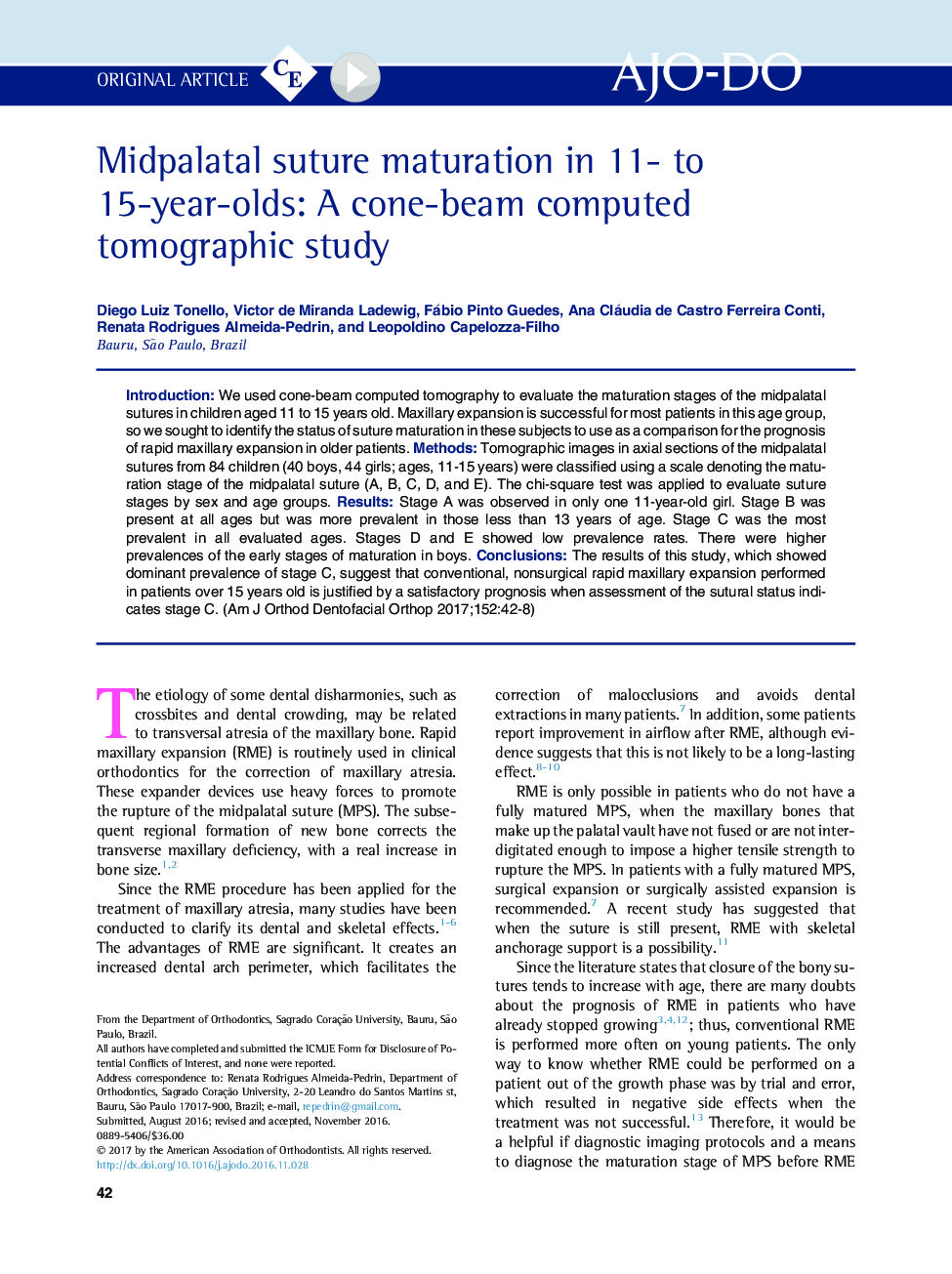| Article ID | Journal | Published Year | Pages | File Type |
|---|---|---|---|---|
| 5637483 | American Journal of Orthodontics and Dentofacial Orthopedics | 2017 | 7 Pages |
â¢Maturation stage of midpalatal sutures was evaluated with CBCT in 11- to 15-year-olds.â¢Stage B was present at all ages, but was more prevalent in those younger than 13.â¢Stage C was the most prevalent in all evaluated ages.â¢Stages D and E showed low prevalence rates.â¢RME can be performed in patients 15 or older with stage C sutural maturation status.
IntroductionWe used cone-beam computed tomography to evaluate the maturation stages of the midpalatal sutures in children aged 11 to 15Â years old. Maxillary expansion is successful for most patients in this age group, so we sought to identify the status of suture maturation in these subjects to use as a comparison for the prognosis of rapid maxillary expansion in older patients.MethodsTomographic images in axial sections of the midpalatal sutures from 84 children (40 boys, 44 girls; ages, 11-15Â years) were classified using a scale denoting the maturation stage of the midpalatal suture (A, B, C, D, and E). The chi-square test was applied to evaluate suture stages by sex and age groups.ResultsStage A was observed in only one 11-year-old girl. Stage B was present at all ages but was more prevalent in those less than 13Â years of age. Stage C was the most prevalent in all evaluated ages. Stages D and E showed low prevalence rates. There were higher prevalences of the early stages of maturation in boys.ConclusionsThe results of this study, which showed dominant prevalence of stage C, suggest that conventional, nonsurgical rapid maxillary expansion performed in patients over 15Â years old is justified by a satisfactory prognosis when assessment of the sutural status indicates stage C.
